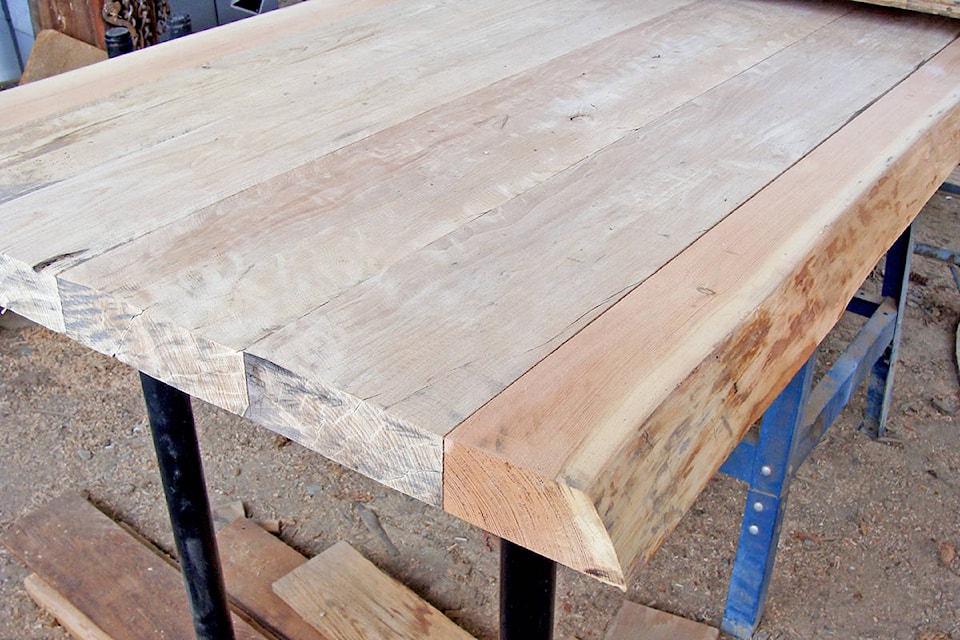I finally took some time to organize the various sizes of lumber I have been milling for the past few years.
I have a Peterson swing blade mill that has a 17-inch carbide tip blade.
I have been milling mostly Douglas Fir since it is the most abundant on and near my property. After producing various lumber sizes for my building projects and a little for selling, I have tried to make some live edge boards for furniture. The Internet had lots of examples of some very creative designs of tables, benches and a variety of furniture.
Some of the large tables made from a single slab of hardwood are most impressive and some local lumber stores have these exotic pieces for sale. As impressive as they are, I have been looking for ways to keep my costs down by using smaller pieces of a variety of hardwoods I have been accumulating. So far I have some juniper, birch, cotton wood, apple, oak and what I think is maple. The oak and maple are from reject untreated rail ties purchased at the plant in Ashcroft where they produce treated railroad ties.
Read More: Chasing Douglas Fir beetles in the Chimney Valley
Read More: Plenty of areas to study to create fire breaks
The rejected ties are reasonably priced but as you would expect it can be a challenge to get some usable products because of the splits, twists and rot. But sometimes you get lucky and some very interesting products result. My latest ongoing project is a table made from live edge fir on the sides with oak and maple boards for the centre section. The table is approximately seven feet long and the two-inch boards have produced a very stable but heavy table.
READ MORE: Soil cavities reveal extensive root systems of burned trees
I use the Peterson mill to get the boards as close to even as possible but my intent is to emphasize the individual nature of each board. i.e. reasonably precise fit but retain some of the natural details like insect holes and channels, some splits, knot holes and other natural defects. If you want a flawless look then go for plastic or synthetic laminates.
So far I have not used any glue as I don’t know what kind of shrinkage I may be faced with so I am relying on metal strips attached by screws on the underside. For the maple this has proven to be a challenge as I was breaking wood screws and had to resort to self tapping metal screws some of which also broke.
The base (legs) for these heavy tables can be a challenge as I have seen examples of heavy wood legs to a wide variety of metal legs.
After looking at some internet examples I realize that some of the lumber that I have rejected in the past can be incorporated into the most interesting designs especially the twists and knots, etc.
Some artists are using hardwood slabs with the live edge in the center of the table with coloured glass or acrylic fillers to produce a wide variety of finishes.
Google live edge tables and you will see how the imagination is the only limitation to the fantastic array of wood furniture that is being designed and created.
Jim Hilton is a professional agrologist and forester who has lived and worked in the Cariboo Chilcotin for the past 40 years. Now retired, Hilton still volunteers his skills with local community forests organizations.
Do you have a comment about this story? email:
editor@wltribune.com
Like us on Facebook and follow us on Twitter.
